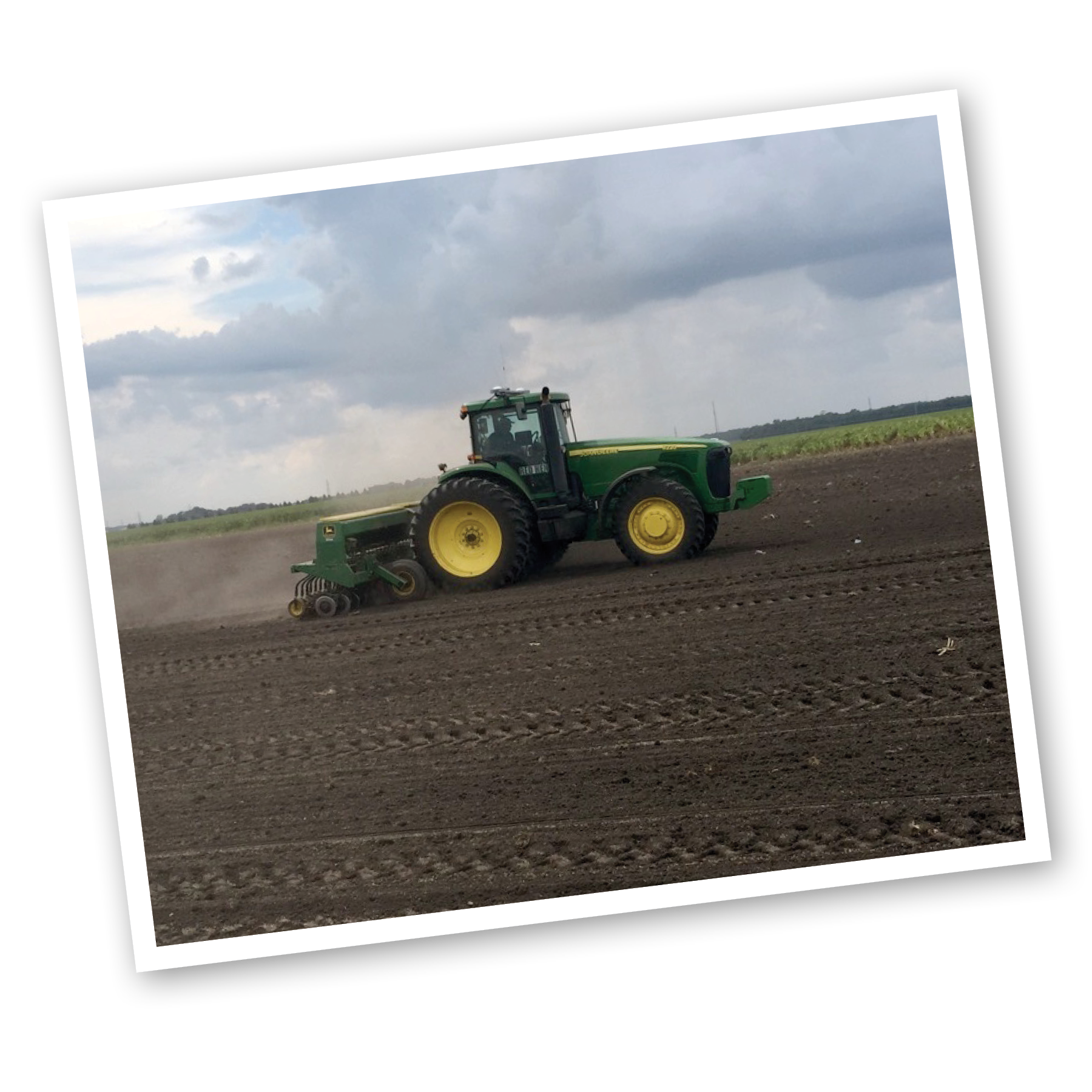
We have never hauled soil into our sod fields. We remove very little soil with each harvest. An individual roll of turf is primarily root mass. If you pull apart a roll of sod, you really won’t find much dirt. The roll of sod is held together with horizontal roots and some decomposing leaf matter that is interwoven. To put this in perspective, one cubic foot of dry dirt weighs about 100 pounds. A 10-square-foot roll of sod weighs about 35 pounds. Most of this is water weight.
Grubs are rarely a problem in our operation. At worst, they may infest a small area in a field. We merely focus harvest on a different area if grubs become an issue. Due to their lifecycle, grubs do not present a long-term problem.
Oh yeah. We water according to what the plant needs. Newly seeded turf needs frequent shallow watering to keep the plants alive. Once our sod reaches maturity, we water heavily but infrequently. At most, we may apply .70 inch of water at one time. In the hottest part of the year, that will probably see the plant through for five to seven days, depending on the soil type. During the spring and fall, a lighter application of .40 inch may get the turf by for a week. If we have a field of turf that is mature but we are not harvesting due to demand, we may pull back watering and allow the grass to go dormant for a period of several weeks. It doesn’t hurt the grass and it saves on watering. Every watering decision is made by looking at the weather first to determine temperatures and the possibility of rain, then evaluating the soil in the sod field to see how dry it is. We never set our irrigation systems on a schedule. You shouldn’t either. We want to use our resources wisely.
We don’t like to use chemicals. They add cost to the production of sod and do not guarantee its quality. Luckily with advances in chemicals available to us, we can treat most of our weed problems with just a few chemicals. Just like any homeowner, our best chance to reduce weeds is to have healthy turf. We use cultural practices, like mowing and seeding in the fall, to give grass the best chance to out-compete weeds. Broadleaf weeds are the biggest problem and those can easily be treated. Typically, we apply herbicide only when weeds get to a critical stage and have a high density in the turf. This way, one application can take care of everything. We do not use pre-emergent herbicide for turf because we don’t know how much weed pressure will show up. This is the responsible path for turf care, in our opinion

We have never hauled soil into our sod fields. We remove very little soil with each harvest. An individual roll of turf is primarily root mass. If you pull apart a roll of sod, you really won’t find much dirt. The roll of sod is held together with horizontal roots and some decomposing leaf matter that is interwoven. To put this in perspective, one cubic foot of dry dirt weighs about 100 pounds. A 10-square-foot roll of sod weighs about 35 pounds. Most of this is water weight.
Grubs are rarely a problem in our operation. At worst, they may infest a small area in a field. We merely focus harvest on a different area if grubs become an issue. Due to their lifecycle, grubs do not present a long-term problem.
Oh yeah. We water according to what the plant needs. Newly seeded turf needs frequent shallow watering to keep the plants alive. Once our sod reaches maturity, we water heavily but infrequently. At most, we may apply .70 inch of water at one time. In the hottest part of the year, that will probably see the plant through for five to seven days, depending on the soil type. During the spring and fall, a lighter application of .40 inch may get the turf by for a week. If we have a field of turf that is mature but we are not harvesting due to demand, we may pull back watering and allow the grass to go dormant for a period of several weeks. It doesn’t hurt the grass and it saves on watering. Every watering decision is made by looking at the weather first to determine temperatures and the possibility of rain, then evaluating the soil in the sod field to see how dry it is. We never set our irrigation systems on a schedule. You shouldn’t either. We want to use our resources wisely.
We don’t like to use chemicals. They add cost to the production of sod and do not guarantee its quality. Luckily with advances in chemicals available to us, we can treat most of our weed problems with just a few chemicals. Just like any homeowner, our best chance to reduce weeds is to have healthy turf. We use cultural practices, like mowing and seeding in the fall, to give grass the best chance to out-compete weeds. Broadleaf weeds are the biggest problem and those can easily be treated. Typically, we apply herbicide only when weeds get to a critical stage and have a high density in the turf. This way, one application can take care of everything. We do not use pre-emergent herbicide for turf because we don’t know how much weed pressure will show up. This is the responsible path for turf care, in our opinion